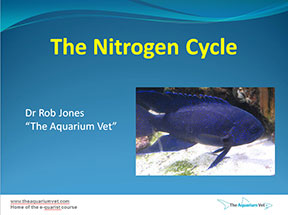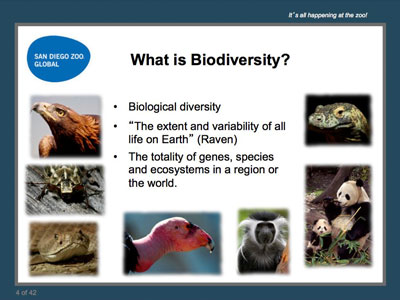 |
The Importance of Sensory Rich Play (CDA 2) |
2.00 |
This course explores the research-backed benefits of this exciting form of play, from fostering essential developmental skills to sparking joy and curiosity. However, navigating regulations and concerns in early care settings can be tricky. Dive into practical strategies to empower young children in making choices and assessing risks amidst sensory-rich, highly physical activities, nurturing confident explorers with a deep love for learning. |
 |
The Importance of Stimulating and Focused Interaction (CDA 8) |
2.00 |
This course empowers early care and education (ECE) professionals to nurture young minds and hearts through meaningful connections. Explore the profound impact interactions have on children's learning, development, and relationships with teachers and peers. Discover research-backed strategies to cultivate stimulating, focused interactions from infancy onwards, setting the stage for positive outcomes and a lifelong love of learning. |
 |
The Indian Child Welfare Act |
1.00 |
The purpose of the Indian Child Welfare Act (ICWA) is to protect the rights of Native American communities and prevent Native American children from being unjustifiably removed from their families. This course will give you a general knowledge of how ICWA contributes to the preservation of Native American culture. |
 |
The Latest and Greatest in Employee Benefits |
1.00 |
During this highly informative webinar, you will learn of the innovative ways San Diego Zoo Global was able to maintain benefit costs, help employees to better understand and appreciate their benefits and save time enrolling in their benefits, and other current trends in the complex world of employee benefits. |
 |
The Neuropsychology of Trauma and How It Impacts Learning |
1.00 |
Understanding the root of trauma and how we can cultivate a well- functioning classroom is an essential task for educators. How do VUCA (volatility/uncertainty/complexity/ambiguity) impact child and adolescent development? How do ACEs (adverse childhood experiences) impact child and adolescent development? How do SCARF needs (status/certainty/autonomy/relatedness/fairness) impact child and adolescent development? This workshop gives participants insight into the workings of the sympathetic (fight or flight) and parasympathetic nervous system (rest and digest) and their impact on learning. |
 |
The Nitrogen Cycle and Biofiltration |
1.00 |
In this webinar we will discuss one of the most common causes for the death of fish i.e. ammonia toxicity and to a lesser extent nitrite toxicity. Understanding the nitrogen cycle is essential for any type of fish keeping.
We will look at the steps in the conversion of ammonia to nitrite and then to nitrate as well as the toxicity of the various stages in the cycle. Biofiltration is one of the most critical components of any closed system. What is a biofilter and how to establish and successfully maintain one will be discussed. An examination of the process of denitrification will complete the webinar. |
 |
The NoFEAR Act |
0.50 |
This course covers the Notification and Federal Employee Antidiscrimination and Retaliation Act, also known as the NoFear Act. This course will discuss the background and basics of the act and other antidiscrimination laws that will protect you in the workplace. This course will also discuss what you should do if you believe you have been discriminated against, and the steps you can take. |
 |
The NoFEAR Act (Corrections) |
0.25 |
This course will inform participants of the Notification and Federal Employee Antidiscrimination and Retaliation Act, also known as the NoFEAR Act. At the conclusion of this course, participants should understand the basic provisions of the NoFEAR Act, know what Antidiscrimination and Whistleblower Protection Laws protect them, and understand how to file a complaint alleging discrimination, retaliation, or a violation of the Whistleblower Protection Laws. |
 |
The Purpose for Ethical Commitment (CDA 6) |
2.00 |
This course explores the NAEYC Code of Ethical Conduct, equipping you to uphold your responsibilities and moral obligations towards children, families, colleagues, and the wider community. Discover how this essential framework guides your interactions and decisions, fostering a foundation of trust, respect, and professionalism in your work. |
 |
The Relevance of the Child-Caregiver Attachment (CDA 7) |
2.00 |
Numerous attachment theorists identify the importance of children’s early, secure attachment bonds. Children’s relationships with their significant caregivers are the primary means for fostering healthy social and emotional development. This course introduces research and information focused on the attachment relationship, with special emphasis on observing and documenting teacher-child relationship quality to support positive outcomes for children. This course is designed to be part of a Child Development Associate (CDA) Credential™ curriculum, and covers CDA subject area 7: Observation and Assessment. It can also be taken as a stand-alone learning event or as part of a broader early childhood education curriculum.
|
 |
The Role of a General Education Teacher in CSE Meetings |
1.25 |
This course covers the vital involvement of general education teachers in Committee on Special Education (CSE) meetings. It is just one out of many educational professional courses we offer. It aims to equip participants with essential knowledge on supporting students with disabilities. As a general education teacher, comprehending your role in a CSE meeting and the critical nature of implementing accommodations and modifications for students with disabilities is essential. |
 |
The Role of Special Instruction in Early Intervention |
1.00 |
This course covers the role of special instruction in early intervention (EI). This course focuses on promoting caregiver-child interactions and supporting caregivers in exploring new strategies to enhance the child’s development and participation in everyday activities. The course aligns with federal requirements and the Individuals with Disabilities Education Act (IDEA). It emphasizes family-centered practices, cultural responsiveness, and collaboration between families and professionals. |
 |
The Role of Staff in Behavior Guidance: Elementary Students |
2.00 |
Guiding and managing the behavior of children and youth are some of the biggest challenges that out-of-school time program staff face. Staff needs to be actively engaged in supporting children and youth in:
1. Building inner self-control.
2. Making and fostering friendships with children and youth from all backgrounds.
3. Making responsible, age-appropriate choices.
4. Understanding natural and logical consequences for behaviors.
5. Taking responsibility for behaviors.
By the end of this course, you will be able to:
- Understand your reactions to the behaviors of children and youth, and learn to use this information to respond more effectively.
- Learn to use behavior guidance strategies at the appropriate time. |
 |
The Role of Staff in Behavior Guidance: Middle and High School Students |
2.00 |
Guiding and managing the behavior of youth are some of the biggest challenges that out-of-school time program staff face.
By the end of this course, you will be able to:
- Understand your reactions to the behaviors of children and youth, and learn to use this information to respond more effectively.
- Learn to use behavior guidance strategies at the appropriate time. |
 |
The Role of the Site Leader |
2.00 |
Supervising adults is challenging under any circumstances, but in out-of-school time, supervision can be even more challenging because those supervised needs to be independent workers who are creative, energetic, enthusiastic and calculated risk takers. The afterschool site leader must have an arsenal of skills and strategies to be both a leader and a supervisor. This course offers a basic overview of the roles and responsibilities of the site leader or supervisor and how those roles support a culture of team excellence and mutual support. |
 |
The Safe Food Handler |
0.50 |
This course covers how food workers introduce germs, bacteria, and viruses into the workplace. Furthermore, this course covers methods for abating foodborne illnesses in the workplace and keeping the transmission of foodborne illnesses low. |
 |
The Science Supporting Breeding and Transfer Plans |
2.50 |
This course is intended to provide participants with a broad understanding of why and how animal breeding and transfer recommendations are made for cooperative breeding programs. This course is appropriate for animal care staff involved in management and collection planning at zoos and aquariums. |
 |
The Six Ps of Marketing School-Age Programs |
2.00 |
Effective marketing of school-age programs is a systematic process that involves research, analysis, assessment of market trends and needs, short-term and long-term planning, and development of effective strategies to promote school-age program services and develop a positive image of the program in the community. It is important for school-age care leaders to recognize that marketing is a far reaching process that includes, but is not limited to, advertising and publicity. When leaders take a comprehensive approach to marketing, their programs and projects have an excellent chance of success. Knowledge and understanding of the marketing process is an invaluable tool for leaders as they plan and implement new programs and projects, assess the stability and need for improvement of current programs, develop plans for new or expanded programs, and develop a positive public image of the program and its services. |
 |
The Stages of Community—How to Create Effective Group Dynamics in the Workplace |
1.00 |
We may not be uniform—in race, politics, gender, generation, etc.—but we can be unified in love and service. This is how we get there: Stage One is Psuedo-community. Relationships are a half an inch deep and fake. We pretend we all get along, but we really can’t stand each other. Stage Two is Chaos. We quit pretending that we like each other, we finally aired our differences, and now the battle has begun to change each other. Stage Three is Surrender. We’ve accepted that we are stuck with each other, and we’ve proven that we’ve only hurt each other in the process of trying to change each other. Finally, though, we’re willing to surrender our agenda (and all other barriers to our communication) so that we might understand one another. Now we have hope. Stage Four is Community. We still don’t agree on everything, but we’ve learned to treat each other with dignity and respect. Our campus is a relationally safe environment. We share a sense of belonging and purpose. This is the place where lives are impacted. Everyone wants to be on this campus. |
 |
The Stages of Escalation and How to Manage Them |
1.00 |
We know that the most effective learning is relationally based. The same is true when we intervene with students in crisis: the deeper we’ve established relationships with students, the more power we have to guide them to calm and safety. Crisis situations can leave a wake of difficult thoughts and feelings. Students and teachers can feel lingering shame, anger, fear and confusion for days—even weeks or months—after a traumatic event. The good news is that crisis situations do not have to be harmful to a relationship, and in fact, they can serve as a doorway to deeper trust, intimacy, and respect. |
 |
The Value of a Great Strategic Plan |
2.00 |
During this course, you'll see how a great strategic plan can help you achieve a deep understanding of your purpose, clarify your priorities, and deliver maximum mission impact - without sacrificing financial sustainability. At the end of the course, we will show how strategic planning at San Diego Zoo Global helped to transform our organization, generated impressive results, and paved the way for a better future for wildlife. |
 |
The Value of Biodiversity and its Link to Human Welfare |
1.00 |
Participants will explore the question: "What is the value of biodiversity?" We'll discuss biodiversity's value from intrinsic and utilitarian perspectives and discuss why saving Earth's species is a critically important matter for all humans. The personal link between biodiversity and human wellbeing has been demonstrated in numerous studies, a compelling body of research that we'll discuss here. Lastly we'll discuss the current plight of global biodiversity and how we can each personally help to alleviate threats. |
 |
Tigers |
2.00 |
This course will provide an introduction to tigers, including an overview of physical characteristics, habitat, behavior, reproduction and the conservation efforts dedicated to protecting this species.
|
 |
Time Management: Information Overload |
1.00 |
This course will focus on how to identify the causes of information overload and overcome it by screening information, control paperwork by organizing your office and filing system, and communicate effectively to increase productivity. |
 |
Time Management: Productivity |
0.75 |
This course will focus on how to increase productivity by controlling interruptions and meetings and recognize and overcome factors that adversely affect productivity. |


























